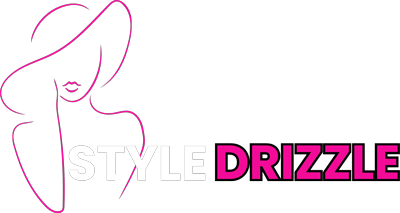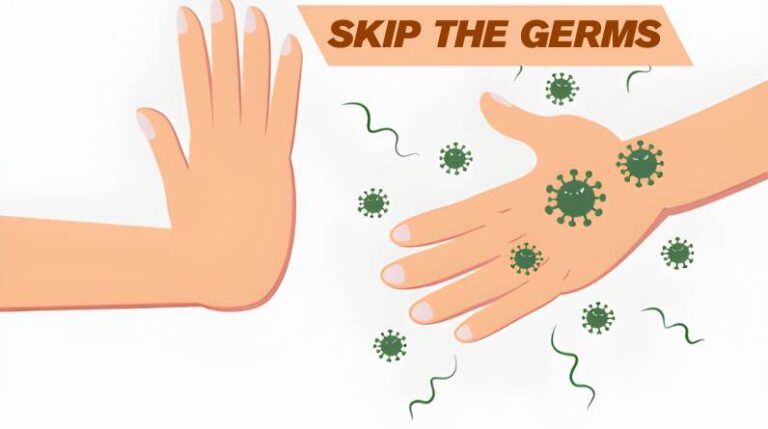In 2025, “skip the germs” has become more than just a catchy phrase—it’s a daily necessity in our interconnected world. But here’s the problem: most people either go overboard with paranoid cleaning rituals or do too little because they’re overwhelmed by conflicting advice. The truth? You don’t need to scrub every surface hourly or live in a bubble. What you need is a strategic, evidence-based approach that focuses on high-impact actions.
This article cuts through the noise to show you exactly where germs pose the greatest risk, which prevention methods actually work, and how to build sustainable habits that protect your health without consuming your life. Whether you’re a busy professional, a parent managing a household, or someone who simply wants to stay healthier, this guide delivers practical solutions backed by science.
Understanding the Real Germ Threat: Risk vs. Reality
Before diving into prevention strategies, let’s establish what we’re actually dealing with. Not all germ exposure is equal, and understanding this distinction is crucial for effective protection.
The Four Categories of Germs
Germs fall into four main categories, each requiring different prevention approaches:
- Bacteria: Single-celled organisms like E. coli, Salmonella, and Staphylococcus that cause food poisoning, skin infections, and respiratory illness
- Viruses: Microscopic infectious agents including influenza, norovirus, and coronaviruses that hijack your cells to reproduce
- Fungi: Organisms like Candida and mold that thrive in warm, moist environments and cause skin or respiratory issues
- Protozoa: Parasitic microorganisms such as Giardia found in contaminated water
Where Germs Actually Thrive
Contrary to popular belief, the dirtiest-looking places aren’t always the most contaminated. Research shows that germs concentrate in specific high-touch, high-moisture areas. According to NSF International, here’s where bacteria colonies actually flourish:
| Location | Bacteria Concentration | Primary Germ Type |
|---|---|---|
| Kitchen sponge/dishcloth | 10 million bacteria per square inch | E. coli, Salmonella |
| Smartphone screen | 25,000+ bacteria per square inch | Staphylococcus, Streptococcus |
| Kitchen sink | 500,000+ bacteria per square inch | Various bacteria, fungi |
| Bathroom faucet handle | 6,000+ bacteria per square inch | Coliform bacteria |
| Computer keyboard | 7,500+ bacteria per square inch | Various bacteria |
The surprise? Your kitchen sponge likely harbors more bacteria than your toilet seat. This is why strategic cleaning—targeting actual hotspots—matters more than general surface wiping.
The High-Impact Hierarchy: Where Your Efforts Matter Most
Not all hygiene actions are created equal. Some deliver massive protection with minimal effort, while others consume time without significant benefit. Here’s the strategic framework for maximum germ prevention with minimum overwhelm:
Tier 1: Non-Negotiable Essentials (Highest ROI)
These actions prevent an estimated 70-80% of common infections according to the CDC:
- Hand Hygiene: Washing hands with soap and water for 20+ seconds before eating, after bathroom use, and after touching public surfaces. The CDC reports this single action reduces respiratory infections by 16-21% and gastrointestinal illness by 31%.
- Face-Touching Awareness: The average person touches their face 23 times per hour. Since 80% of infections enter through eyes, nose, or mouth, this habit is a critical intervention point.
- Phone Sanitization: Studies show smartphones carry 10 times more bacteria than most toilet seats. Daily cleaning with 70% alcohol wipes eliminates this mobile germ factory.
- Food Safety Basics: Washing produce, cooking meat to safe temperatures (165°F for poultry, 145°F for beef), and refrigerating perishables within 2 hours prevents foodborne illness affecting 48 million Americans annually.
Tier 2: High-Value Additions (Strong Impact)
These practices provide significant protection once Tier 1 habits are consistent:
- Disinfecting high-touch surfaces daily (doorknobs, light switches, refrigerator handles)
- Changing kitchen sponges weekly or microwaving damp sponges for 2 minutes daily
- Showering after gym workouts or public transportation use
- Washing bed linens weekly in hot water (130°F minimum)
- Using hand sanitizer (60%+ alcohol) when soap and water aren’t available
Tier 3: Situational Practices (Context-Dependent)
These matter during specific circumstances:
- Wearing masks in crowded spaces during flu season or outbreaks
- Extra cleaning protocols when household members are ill
- Post-travel sanitization routines
- Heightened awareness in healthcare settings
The Antibacterial Product Question: What Actually Works
One of the most confusing aspects of germ prevention is product selection. The market offers countless antibacterial soaps, sanitizers, and cleaning solutions—but are they necessary?
Regular Soap vs. Antibacterial Products: The Science
Here’s what research actually shows: Regular soap and water work just as effectively as antibacterial soap for most everyday situations. The FDA banned 19 antibacterial chemicals from consumer soaps in 2016 due to lack of evidence they provided extra benefit over regular soap.
When antibacterial products make sense:
- Hand sanitizers (60%+ alcohol) for on-the-go situations without water access
- Medical-grade products in healthcare settings
- Specific situations with compromised immunity
- Products containing benzalkonium chloride or tea tree oil for skin conditions
When to stick with regular soap:
- Daily handwashing at home and work
- General body cleansing
- Dishwashing and food prep areas
- Any time water is readily available
The Overuse Problem: Antibiotic Resistance
Excessive use of antibacterial products contributes to antibiotic resistance, one of the top 10 global public health threats according to the WHO. The bacteria that survive antibacterial agents become stronger, making infections harder to treat. This is why strategic, moderate use matters.
Building Your Personalized Germ-Skipping System
Sustainability beats perfection every time. Here’s how to create a realistic routine you’ll actually maintain:
The Morning Protection Protocol (5 Minutes)
- Wash hands thoroughly after morning bathroom use
- Wipe phone with alcohol-based screen wipe
- If commuting: pack hand sanitizer and tissues
The Workday Defense Strategy
Start of workday:
- Wipe down keyboard, mouse, and desk surface
- Wash hands before first meal or snack
Throughout the day:
- Use knuckles or elbows for elevator buttons and door handles
- Sanitize hands after touching shared items (printers, coffee makers)
- Avoid touching face—keep tissues handy for necessary contact
The Evening Reset Routine (10 Minutes)
- Remove and wash outdoor clothing if needed
- Shower to wash away accumulated germs
- Wipe down phone again (you’ve used it all day)
- Quick kitchen cleanup: sanitize sink, replace dish towel if damp
- Prepare clean clothes for tomorrow
The Weekly Deep-Clean Checklist
Set aside 30-45 minutes for these high-impact tasks:
- Replace or sanitize kitchen sponges
- Clean refrigerator handles and frequently opened containers
- Disinfect bathroom faucets, toilet handles, and light switches
- Wash bed linens and towels in hot water
- Wipe down all remote controls and frequently used electronics
- Clean and disinfect reusable water bottles
Common Mistakes Even Health-Conscious People Make
Awareness alone isn’t enough—execution matters. Here are the most frequent errors that undermine otherwise good hygiene:
Mistake #1: The Quick Rinse Instead of Proper Handwashing
The problem: Research shows the average handwashing time is just 6 seconds—far short of the 20 seconds needed to effectively remove germs.
The fix: Sing “Happy Birthday” twice, or count to 20. Ensure you scrub all surfaces including between fingers, under nails, and wrists.
Mistake #2: Phone Hygiene Neglect
The problem: You wash your hands religiously, then immediately pick up your germ-covered phone and hold it against your face.
The fix: Clean your phone at least once daily. Use speaker mode or headphones when possible. Never take your phone into the bathroom.
Mistake #3: Overconfidence in Hand Sanitizer
The problem: Hand sanitizer doesn’t remove physical dirt or work effectively on greasy hands. It also doesn’t eliminate certain germs like norovirus.
The fix: Use sanitizer as a supplement, not replacement. Always choose soap and water when available.
Mistake #4: Ignoring the Kitchen While Focusing on the Bathroom
The problem: Most people over-clean bathrooms while neglecting the kitchen, where food contamination poses greater health risks.
The fix: Prioritize kitchen hygiene. Replace sponges weekly, sanitize cutting boards after raw meat contact, and clean sink drains regularly.
Teaching Germ Prevention to Children: Age-Appropriate Strategies
Kids are natural germ spreaders—but they’re also capable learners. Here’s how to instill lifelong habits:
Ages 2-5: Make It Fun and Visual
- Use glitter as “germs” to show how they spread and how soap removes them
- Sing songs during handwashing (Baby Shark, ABC song)
- Use colorful soaps and fun towels to create positive associations
- Praise and reward consistent behavior with sticker charts
Ages 6-10: Explain the Why
- Use age-appropriate explanations about germs and illness
- Create responsibility charts for personal hygiene tasks
- Model good behavior consistently—kids mimic what they see
- Use educational videos that explain germ transmission
Ages 11+: Foster Independence and Logic
- Discuss real health consequences and statistics
- Encourage them to research and share what they learn
- Allow them to choose their own hygiene products (within reason)
- Connect hygiene to things they care about (sports performance, appearance, social life)
Special Considerations: When to Intensify Germ Prevention
Certain situations require elevated vigilance without permanent lifestyle changes:
During Illness Outbreaks
When flu season peaks or local disease outbreaks occur:
- Increase handwashing frequency to every 1-2 hours
- Disinfect high-touch surfaces twice daily
- Avoid handshakes and close contact greetings
- Consider masks in crowded indoor spaces
- Stay home when experiencing symptoms
For Immunocompromised Individuals
People with weakened immune systems need enhanced protocols:
- Consult healthcare providers about specific product recommendations
- Maintain strict food safety standards
- Limit exposure to sick individuals
- Consider medical-grade antibacterial products
- Follow specialized cleaning protocols
Post-Travel Hygiene
After flights, public transit, or stays in hotels:
- Shower immediately upon returning home
- Wash all clothing worn during travel
- Disinfect luggage exteriors before storing
- Clean shoes or remove them at the door
- Wipe down travel electronics and accessories
The Bottom Line: Smart Prevention, Not Paranoid Living
Skipping the germs effectively isn’t about obsessive cleaning or living in fear. It’s about understanding where germs actually pose risk and implementing high-impact habits that become second nature.
The core takeaways:
- Focus on the Tier 1 essentials—hand hygiene, face-touching awareness, phone cleaning, and food safety
- Regular soap works for most situations; save antibacterial products for specific needs
- Target actual germ hotspots (kitchen, phones) rather than obsessing over visible dirt
- Build sustainable routines you can maintain year-round, not extreme measures you’ll abandon
- Teach children early, using age-appropriate methods
- Intensify protocols during outbreaks or special circumstances, then return to baseline
Remember: the goal isn’t sterility—it’s strategic reduction of harmful exposures. Your body needs some germ exposure to build immunity. What you’re preventing are the high-risk exposures that lead to illness, missed work, disrupted routines, and medical expenses.
Start small. Pick one Tier 1 habit this week. Master it. Add another. Within a month, you’ll have a sustainable system that protects your health without consuming your life. That’s how you truly skip the germs in 2025—with science, strategy, and sanity.


